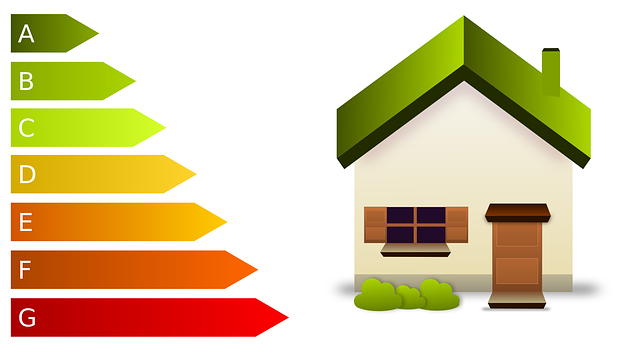
Image Credit: Open Clipart-Vectors (Pixabay)
1. CLIMATE
Being familiar with your climate well will serve you well. Knowing effective seasons in a year helps determine the base design of a house. There are a few typical seasons to consider are those with Winter, Autumn/Fall, Summer, Spring, and dual seasons (i.e wet and dry). Once you know what you are up against it is easier to decide the design that will offer the most benefit.
2. SOLAR ADAPTIVE DESIGN
Dealing with the sun offers one of the most cost-effective means of designing an energy-efficient house. Anyone for free heating? In cold climates, good glazing area facing effective orientations gives you just that (in Southern Hemisphere – facing North, North Hemisphere – facing South). In contrast, for tropical/dry hot climates, properly shaded house reduces heat load in the building through generous shading eaves, overhangs, or devices.
What you want to control is the amount of solar radiation that is available in your geographic location. Here is a quick guide to the available geographic solar radiation maps around the world https://solargis.com/maps-and-gis-data/download/world.
3. SMART VENTILATION
There are many benefits to have a well-ventilated house. First it controls the temperature of the house to comfortable levels on demand (for hot dry climates it is an essential design feature of the house to cool down at night). Second, it enables good circulation of fresh air within the house making it more liveable. The third important benefit is it prohibits the accumulation of humidity that promotes mould growth.
Harnessing the breeze starts by providing as many operable portions in windows and doors. In designing the location of apertures within a room or space, a good rule of thumb is to allow for opposite ends to enable cross-flow ventilation. This ensures the house breathes air through the house.
4. SELECTING THE RIGHT MATERIALS
Materials play a major role in how the building behaves in interaction with the climate.
The most effective building fabric design will depend on the predominant climate at hand. For cold climates, you would be after mass and bulk. For hot dry and humid climates lightweight design would give you a winning advantage. Temperate climates would benefit designs in between.
Most heavier materials have thermal mass when designed correctly acts as heat storage within the house releasing it at night – perfect for cold and temperate climate zones.
5. INSULATION
Who doesn’t like a warm snug of the blanket around you on a cold winter’s night? The same goes for a house.
Insulation one of the most overlooked items when designing an energy-efficient home. It plays a major in keeping the well-earned heat inside the house for cold climates. The quality level of insulation is usually measured in Thermal Resistance (R-value). A generic rule of thumb is the higher the R-value the better it insulates. If in a tight budget, try accommodating the most occupied areas of the house such as Living and Entertaining areas followed by sleeping rooms.
6. ZONING / BUILDING SEALING
Where practical, zoning by closing sections of the house via doors reduces the tendency to extend heating or cooling unnecessarily. It also applies to vertical transition spaces through floors such as staircases where most of the stacked thermal transfer occurs.
At the same time having good seals to external windows or doors will reduce draught which is basically compared to stitching holes on your jacket when out in the cold. The less draught there is, the more effective and efficient controlling the house temperature inside.
7. EFFECTIVE APPLIANCES
Not everything goes according to plan. Where passive techniques lack, mechanical appliances make up for.
In selecting appliances, most manufacturers offer a means of measuring efficiency. In Australia, appliance efficiency is rated via Energy Rating (https://www.energy.gov.au/households/energy-rating). The higher the stars the less electricity/energy it will cost to run. It is important to be prudent in assessing the relevance of the rating as some appliances which have been stored for a while would have an outdated rating.
It also makes sense to have a bit of knowledge in assessing the least energy-consuming appliance to use. For example in cold climates, when heating spaces in, gas heating is more efficient energy-wise compared to electric heating equipment.
Similar means of equipment have different performances. Convection or radiant heating appliances cost more to run than reverse cycle ones. Electric fans would have a relatively effective means of improving skin temperature with less energy consumption compared to the air-conditioning unit.
If you want to further reduce your electricity bills, you can opt to invest in on-site renewable energy sources such as photovoltaic or mechanically generated systems. There are government initiatives that offer incentives paid back to on-site generated electricity fed back to the grid.
8. USING PROFESSIONAL HELP
If you do not know where to begin, there is always professional help at hand. They will save you time and money and will often give free advice to guide you in the right direction.
In Australia, there are a few accredited organization such as Association of Building Sustainability Association (https://www.absa.net.au/) or Design Matters National (https://www.designmatters.org.au/find) that have a list of consultants and professionals specializing in sustainable and energy-efficient building design.
Most consultants use specialized software to analyze building designs giving you an insight into what is involved and offers a more customized solution that may save you money overall.
The National House Energy Rating Scheme (https://www.nathers.gov.au/) is a Australian government initiative which rates the energy efficiency of a house based on its design.
 About the Author
About the Author
Genesis Merioles is an accredited energy assessor in Australia and servicing the country nationwide. He is an expert in his field and had done thousands of energy efficiency reports on residential and commercial projects. Genesis is also an advocate of sustainable architecture.
Are there other blogs you work on? Interesting content. I have been looking everywhere for this! Thanks for writing this. Jeanne Herb Pammi